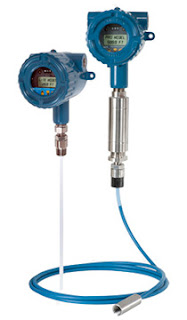Introduction
The first operation in the Kraft pulping process involves the extraction of cellulose from wood by dissolving the lignin that binds the fibers together. This is done in a strongly alkaline solution.
This process is known as cooking. After the wood pulp is obtained, it is washed and bleached to obtain the fibrous product.
To optimize the pulp chemical consumption and water usage, the black liquor concentrations have to be measured before and after washing.
Application
Incoming wood is debarked and chipped to an optimal size to minimize fibre damage, and to maximize the impregnation with the cooking liquor. The chips and the cooking liquor are fed into a large vessel known as digester. The pulping reaction takes place under pressure and at a high temperature.
After cooking, the pulp passes through a blow line to the blow tank and then to a washing section. The diffuser washers separate the black liquor from the fibers by washing them with a washing liquor or water. The products from the fiber line are a clean pulp, and a diluted black liquor known as weak liquor.
The washed pulp is then screened before it is sent to the bleaching plant, and the weak black liquor passes from the washing section to the chemical recovery process.
Instrumentation and installation
The
K-Patents SAFE-DRIVE Refractometer PR-23-SD measures in real-time the Total Dissolved Solids (TDS) content in black liquor.
The
K-Patents refractometer is installed in-line in different points after the digester. TDS measurement
in the blow pulp suspension after the digester enables monitoring of the diffuser operation. Together with other measurements (e.g. filtrate and flush liquor) this provides the mill with the ability to control the performance of the washing zone in the digester. In addition, TDS measurement in the blow line allows the performance of the digester to be monitored, ensuring that it yields the correct concentration. The combination of these measurements facilitates continuous calculation of the mass balances of the digester.
The refractometer’s measurement is unaffected by bubbles, particles, consistency, flow, ion changes, pH, temperature, pressure, color or turbulent flow. The measurement surface is periodically cleaned using an integrated and automatic prism cleaning system.
The K-Patents PR-23-SD
Black liquor concentration measurement with the SAFE-DRIVE process refractometer helps to increase washing efficiency, obtain a consistent pulp quality, reduce bleaching chemical consumption and environmental load, and increase evaporation efficiency.







